Background
GAIM sought to turn its UX research into concrete business outcomes. We had gathered rich customer insights (via interviews, surveys and analytics) and created deliverables like Customer Journey Maps and Personas, but needed to make these tools drive strategy. The goal was to align cross-functional teams (marketing, product, sales, etc.) around Human-Centered goals.Research shows that journey maps and personas help organizations focus on customer needs and improve decision-making, so our mission was to operationalize those insights. In practice, this meant using visual frameworks (Opportunity Solution Tree) and brainstorms(UX Ideation Workshops) to bridge the gap between user needs and GAIM’s business objectives.
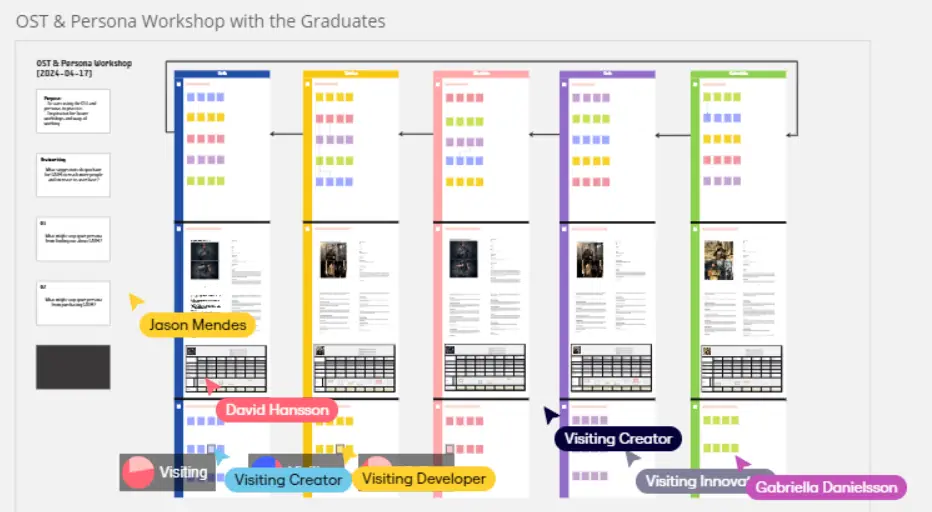
My Role
- Planned and co-facilitated two cross-functional UX Workshops
- Synthesised Insights from Dovetail to design ideation prompts
- Developed the Opportunity Solution Tree framework in collaboration with the team
- Created and iterated on the Customer Journey Map and Personas used in the sessions
- Collaborated on the Prioritisation Matrix activity to align teams on feasible opportunities
- Documented the UX Workshop outcomes and proposed UX Strategy to GAIM
Tools
Methodology & Methods
- UX Workshop 1 – Insight-Led Ideation: Initiated a cross-functional session using the Dovetail Insights. Participants from marketing, development, and sales ideated around user needs to generate early solutions.
- Establishing the Opportunity Solution Tree (OST): Outcomes from the workshop were synthesised into opportunities, solutions, and smaller actionable tasks. An OST framework was introduced to organise ideas and track progress.
- UX Workshop 2 – Persona-Based Ideation: With personas and customer journey maps completed, teams were split and asked to ideate while embodying the personas assigned to them. This brought empathy and specificity to their choices. These workshops were carried out on live Miro sessions.
- Prioritisation Matrix: Ideas generated were mapped to an effort-impact grid in the same live Miro session. Dot voting was used to collaboratively identify what was desirable, feasible, and viable.
- Systematising the UX Strategy: The combined methods were documented and shared as part of a replicable UX workflow that was adopted by GAIM for wider use across future and current projects.
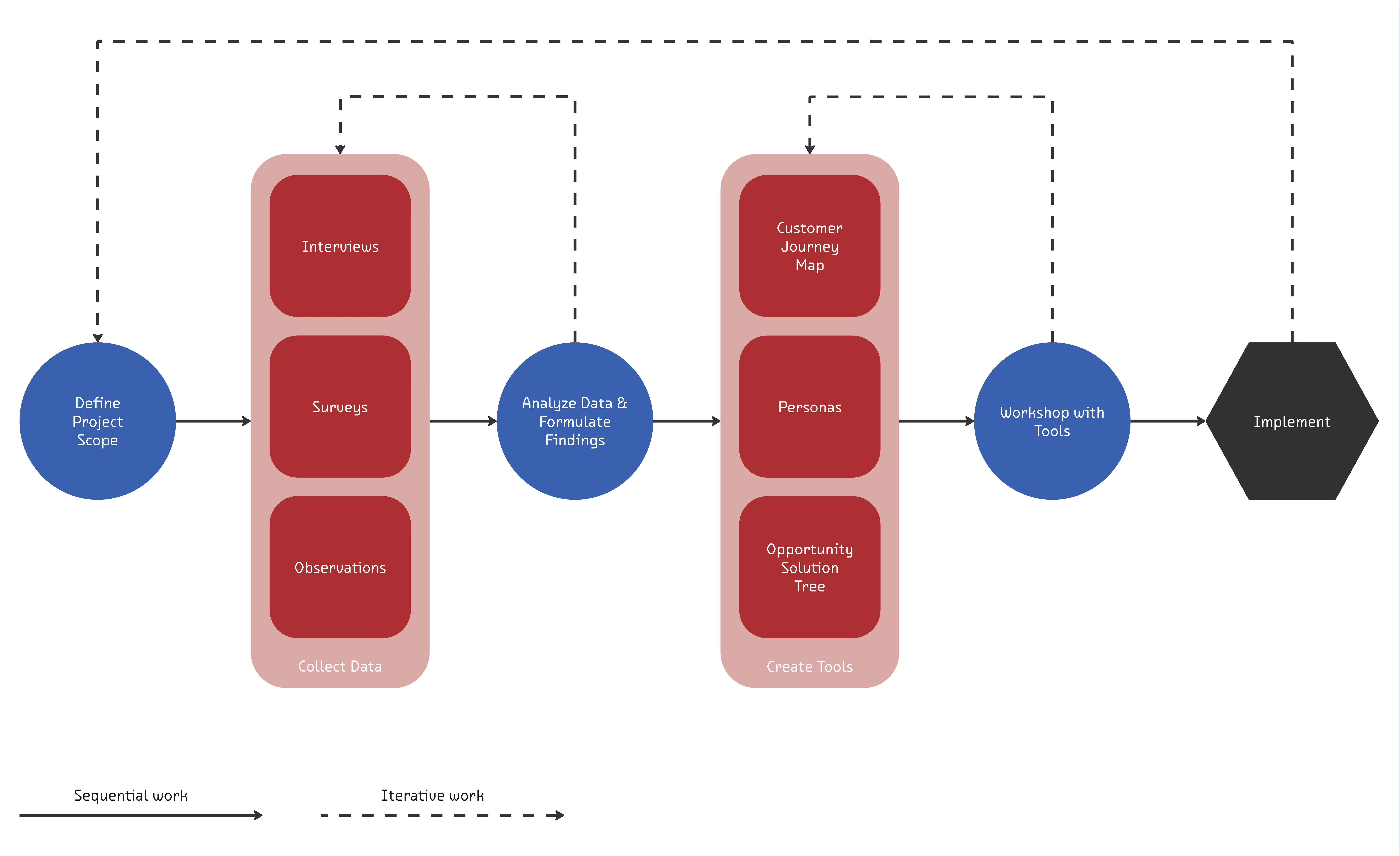
Deliverables
Opportunity Solution TreesFor each phase of the CJM, we created an OST. The illustration below shows how ideas (ideated in a Workshop from the CJM) feed into a top-level business outcome, which then branches into opportunities and solution ideas. Each node in the tree corresponds to a user need (opportunity) and multiple solution paths. This visual output made it easy to trace every proposed feature back to the original user research, ensuring alignment with strategic goals.

Prioritisation Matrix
We produced a final prioritization matrix chart (impact vs. effort) that plotted all workshop ideas. Accompanying tables listed the solution ideas and their corresponding opportunity areas. This deliverable helped leadership and teams quickly see which initiatives offered the best return. By documenting the votes and discussions from the matrix, we handed off a ranked list of UX improvements ready for implementation. Using a prioritization chart is a recognized method to balance user value and business feasibility, and it capped off our process with clear next steps.
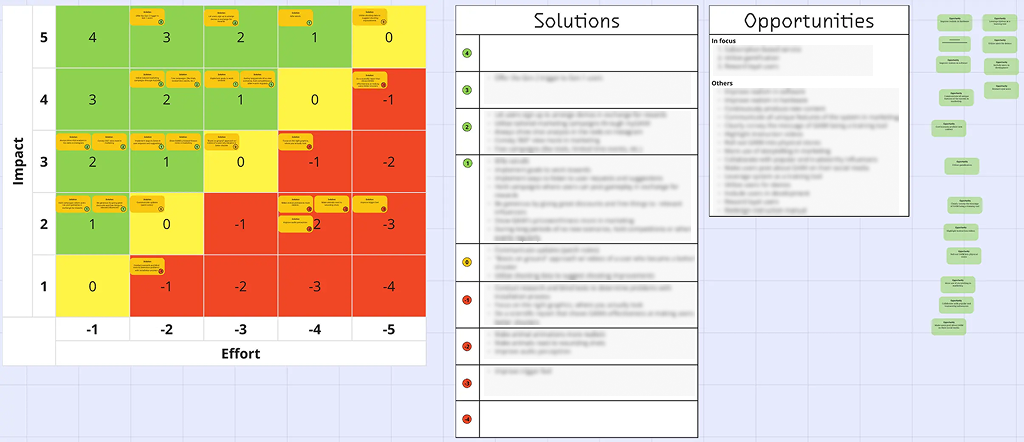
UX Workshop Workflows
As a result of this project, we documented and shared a repeatable UX workshop workflow that GAIM teams now use internally. It includes a templates, facilitation tips, and sequencing guides for turning research insights into design actions.
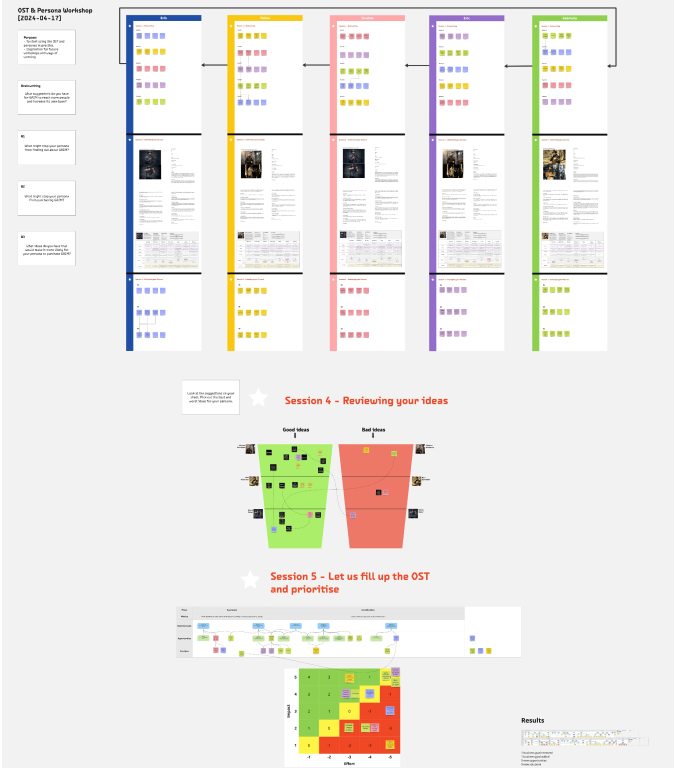
Actionable Miro Board
All workshop activities, earlier UX deliverables, brainstorms and processes were documented and preserved on a shared Miro board. This board became a live artifact for collaboration, future planning, and onboarding of new team members into the UX process.
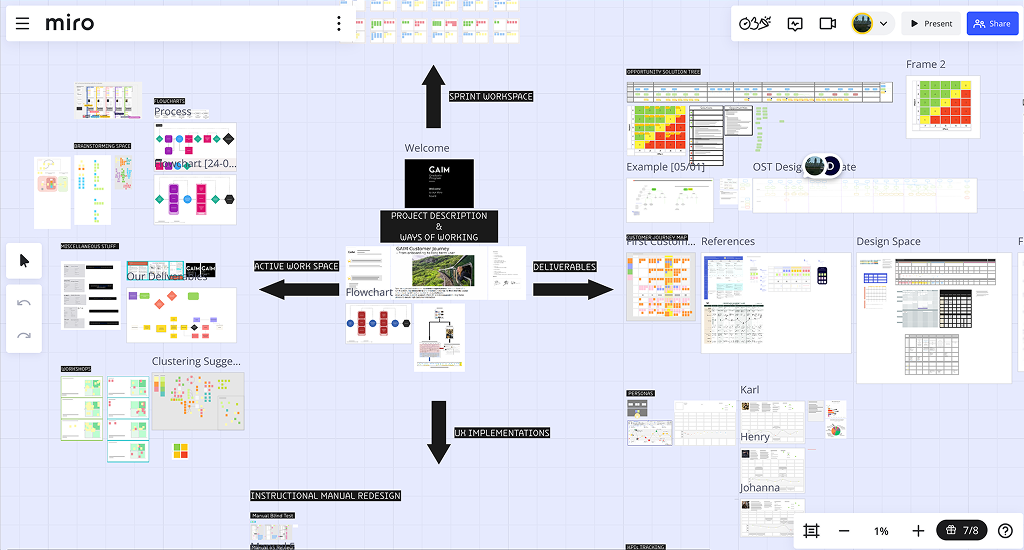
Key Takeaways
Interesting reads from this project
Let’s Connect
Let’s Connect
Pick your preferred way to reach me